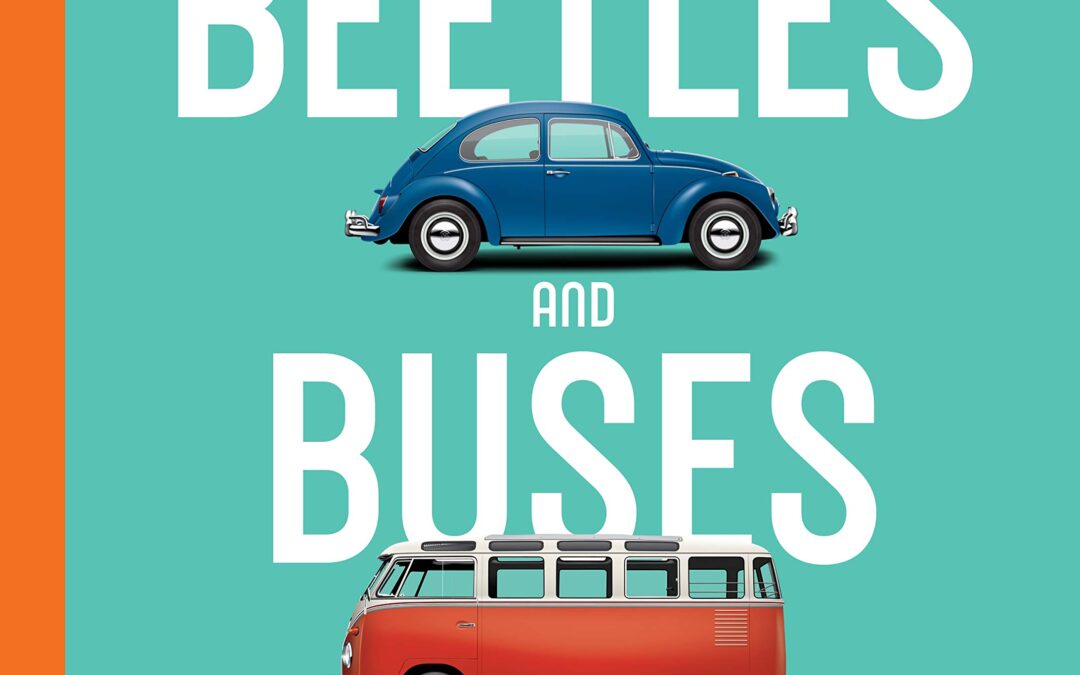
This illustrated history celebrates the 75th and 70th anniversaries of Volkswagen’s two most iconic vehicles, from the first Beetles spearheaded by Ferdinand Porsche in the 1940s to the buses that became synonymous with a generation.
Volkswagen is one of the most beloved brands in motoring history, thanks largely to two instantly recognizable vehicles: the Beetle (a.k.a. Bug) and the Bus. More than 23 million VW Beetles have buzzed into the world since 1945, while the VW Bus presaged the minivan by thirty-plus years. Volkswagen: Beetles and Buses examines and celebrates all aspects of the vehicles and the many cultural associations that have swirled around them for more than seven decades. The diminutive rear-engined and easily mass-produced Beetle became the most popular imported car in America during the 1960s. Its success was due to its familiar face, its wildly clever ad campaigns, and the sheer numbers produced. The equally compact yet spacious Bus (a.k.a. Kombi, Microbus, Type 2, Transporter, and simply “van”) has won millions of fans around the world with its practicality, simplicity, and design.
In this beautifully illustrated and authoritatively written celebration, author Russell Hayes looks back at the vehicles while focusing on the classic air-cooled VWs that ran into the late 1970s. Along the way, readers witness the Beetle and Bus at work and at play and learn about vehicle development and growing roles in popular culture, including star appearances in films like The Love Bug, Little Miss Sunshine, Footloose, Fight Club, The Big Lebowski, and Fast Times at Ridgemont High, as well as television shows like Lost and Once Upon a Time and on the covers of the Beatles’ Abbey Road and Bob Dylan’s Freewheelin’ album. The story is brought up to date with coverage of the New Beetle and plans for the VW Buzz, a modern electric version of the iconic Microbus due in 2022.
Volkswagen: Beetles and Buses deserves a place in the motoring libraries of VW owners, automotive enthusiasts, and those simply interested in pop culture. It’s the ultimate illustrated history of these beloved vehicles.
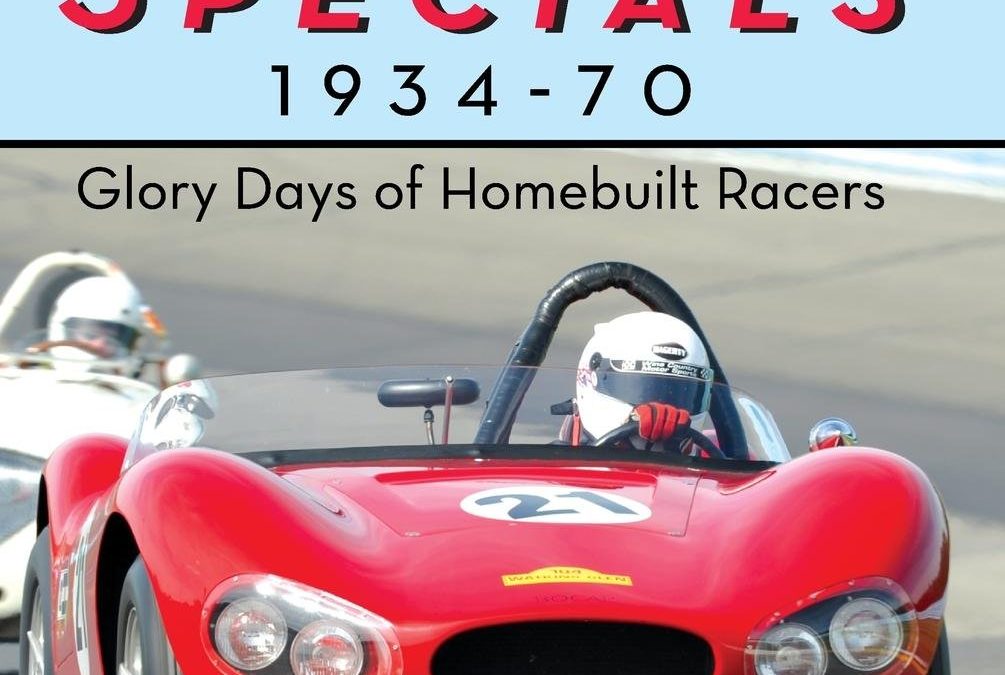
Once upon a time, there was a guy named Max Balchowsky who decided he wanted to beat Ferrari and Jaguar at their own game-road racing. The trouble was, he didn’t have the cash for a factory racer. So he built his own. Using a Ford homemade tube frame, a souped-up Buick V-8 and running on recapped whitewalls, Ol’ Yaller whipped them all.
Welcome to American Road Race Specials 1934-70. These were the glory days of road racing in the United States, from the first races between imported MGs to the world-winning Made-in-the-USA Scarabs and Chaparrals, and on toe the downfall of the Shadow.
This is the story of the men who built and ran their own homemade cars in pioneer SCCA and Cal Club races on town streets, airports and then the first purpose-built American racetracks. Here is Jim Hall, Lance Reventlow, Ken Miles, Carroll Shelby, Ak Miller, Balchowsky, Troutman and Barnes, Phil Hill, Dan Gurney, Roger Penske, George Follmer, and all the rest. . . .
And the cars: Ol’ Yaller, Cunningham, Scarab, Chaparral, Kurtis, Devin, Zerex Special, Bocar, Caballo de Hierro, Pooper, Shadow, Ferraris with Chevy V-8s and every other possible chassis-engine combination a racer could think of. Some were crude, others deceptively homespun; most were half hot rod, half sports car-all of them were unique and built with passion.
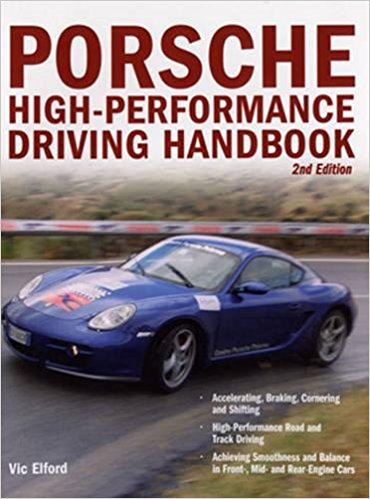
It’s been more than a decade since the first Porsche High Performance Driving Handbook set the standard for getting the most out of a Porsche. If driving techniques haven’t changed since then, technology definitely has. This book, by the world’s foremost expert, takes that new technology into account as it gives readers the latest information on how to drive a Porsche to its limit.
Once upon a time, the Can Am and Trans Am race series changed their rules because Vic Elford and his Porsches were winning too often. Here Quick Vic shares his insights into ride control systems, new tire compounds, and Tiptronic and Direct-Shift Gearbox transmissions, all of which have transformed the experience–and the challenge–of driving a Porsche.
As he discusses recent models, ranging from new generations of the 911 to the whole-cloth inventions of the Boxster, Cayenne, Cayman S and Carrera GT, modern images and historical photos immerse the reader in both the history and the evolving technology that Vic Elford knows like no one else.
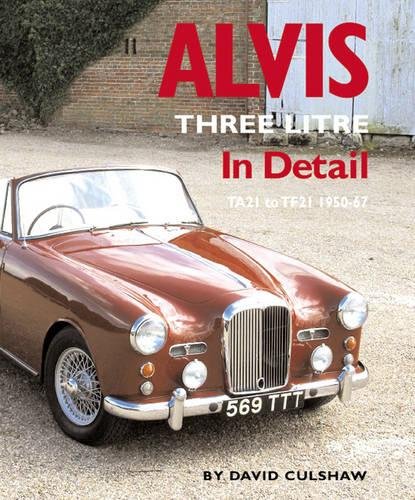
From its launch in 1950 to its demise in 1967, the Alvis Three Litre enjoyed a deserved reputation for effortless performance, exceptional surefootedness and stability, a high degree of driver friendliness, and irreproachable quality of construction. It was considered a rather exclusive car, coming as it did from a maker whose products always had a certain individuality. In addition, there remained through successive models something reassuringly traditional about its styling in both saloon and drophead forms; while never outdated, it displayed a timeless, discreet dignity unmoved by the more frivolous vagaries of fashion. All the while, in the background but ready to serve when called upon, was the Alvis works, whose concern for its cars and their owners was exemplary.Throughout production, the Three Litre was based on the same chassis and was powered by the same engine. This was a handsome and efficient short-stroke six-cylinder, conceived in order to provide the driver with ample power over a very wide rev range. Starting with an output of 83bhp in the early TA21, this robust unit was progressively developed to supply 150bhp in its final TF21 form while retaining the turbine smoothness, reliability and lack of temperament that it had become celebrated for. It was perfectly matched to its chassis and running gear, and those who have driven a Three Litre at speed will find the dynamic qualities of the contemporary rivals from Bentley or Jaguar rather less likeable.This book opens with an exposition of the background that led to the companys introduction of the Three Litre in 1950. Then comes a detailed technical analysis of the TA21, covering all aspects of the chassis, running gear, engine and transmission. This sets the scene for the chapters which follow, on the short-lived TB21 sports tourer, the TC21 and the uprated TC21/100, the Graber-inspired TC108G, the outstandingly handsome TD21 Series I and II, the TE21 and the TF21.Each of these receives comprehensive treatment, including differences from previous models, production changes and full chassis number number listings, along with notes on famous owners and screen appearances. The author provides extensive information on the coachbuilders who supplied Three Litre bodies, including Mulliners, Tickford, Graber, Willowbrook and Park Ward, and there are chapters devoted to the Alvis-powered Healey G Series sports car, the aborted Issigonis-designed Alvis TA350, and the ownership and use of Alvis Three Litre models today.Five outstanding examples of the cars have been specially photographed for this book and are featured in some 70 colour shots. There are also more than 140 black-and-white illustrations drawn from archives as well as from Alvis sales and publicity material. Devoted exclusively to the Three Litre, this book offers an in-depth examination of these excellent cars to provide a store of information for the many owners who care passionately about them, and serve as a tribute to the men who made them.

These cars are futuristic, utopian, eccentric, and always ahead of their time. From models that were never presented to consumers to those produced as limited series, Fast Forward shows cars that pique people’s interest and enthusiasm. From cars never shown to those models that see small production runs, Fast Forward presents vehicles that are just as much sculpture as automobile. Iconic winglets adorn models from the 50s. Automobiles of the 70s appear to be works of science fiction rather than modes of transportation. Classic interpretations and vintage prototypes that hinted at the future of yesteryear. Every decade has it own ideas of the future. The timeline of concept cars is narrated through an alluring pairing of project images and stories from inside studio walls. Designers discuss the catalysts behind their creations from the first scribble upon a blank page to a 3D model to the roadways. Fast Forward showcases the past, present, and, in the true spirit of concept cars, the future of this intriguing and diverse realm.
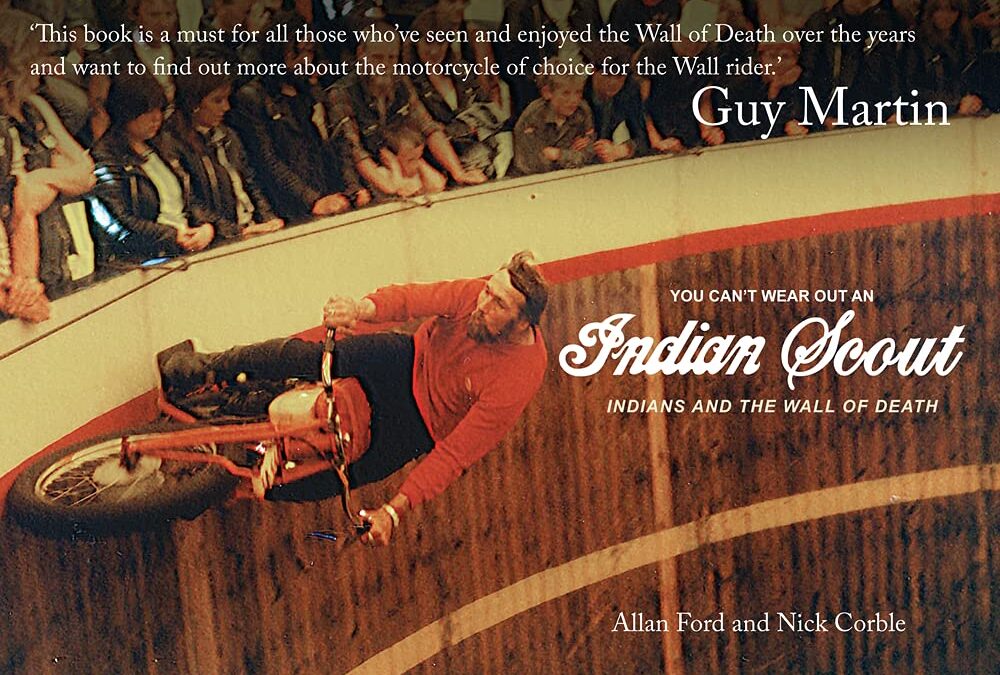
The Indian Scout motorcycle is the favoured mount for Wall of Death riders all over the world. Drawing upon modern and archive material, Wall of Death owner and rider Allan Ford and author Nick Corble explore the reasons behind this relationship and bring the story of the Wall up to date, including behind the scene details of the latest Wall of Death speed record achieved by Guy Martin. It’s a story that spans more than a century, starting with experiments with motorised bicycles in the 1890s, passing through two world wars and ending by looking to a future where Indians continue to be restored and ridden on the Wall. As this book makes clear, the relationship between Indians and the Wall of Death is one that will never be broken. As Sammy Pierce, at one time the world’s largest Indian motorcycle dealer once put it:You can’t wear out an Indian Scout,Or its brother the Indian Chief.They’re built like rocks to stand hard knocks,It’s the Harleys that cause the grief.

In a nation that worships the automobile for the freedom, style, and status that it confers, the Indianapolis 500, run on or near Memorial Day eighty-seven times, is an annual rite of passage celebrating Americans’ love affair with speed. Indy recounts the drivers (677 men and 3 women) who have gone to Indianapolis in the past ninety-five years to live their dreams, staking their lives on the outcome. It highlights the faces in the crowd: hardworking Americans, tinhorn celebrities, hookers, movie stars, gate-crashers, and five American presidents. Terry Reed focuses his narrative on the track’s four quarter-mile-long turns, each the site of triumphs (including those of such multiple winners as Billy Vukovich, A. J. Foyt, and Helio Castroneves); grisly deaths (at least sixty-six, including three unrelated men of the same unusual last name who died in the same turn but in different decades); and bizarre heroics (like the sans souci French driver who downed champagne throughout the 1913 Indy 500 and still won). Reed also examines Indy’s confluence of racing and aeronautics (World War I flying ace Eddie Rickenbacker once owned the track) and the impact upon the event of such forces as segregation, gender politics, food, fads, publicity stunts, world-class partying, and tasteless pop culture. Indy takes readers on an entertaining, full-throttle ride through the history of one of the world’s most famous races and one of America’s most hallowed rituals. It is the definitive account of the crown jewel of American motor

Eric PetersAutomakers have foisted plenty of bad and even laughable cars upon an unsuspecting public over the years. Millions of people have been duped into buying mistakes-on-wheels, while millions more have been subjected to these cars after the new-car smell is gone, revealing only vehicular inadequacy.
Automotive Atrocities: The Cars We Love to Hate is a truly distasteful collection of fake muscle cars, clown-car compacts, faux “luxury” cars, sales disasters, and other truly ugly and ill-conceived four-wheeled follies. Written for anyone who either unwisely decided or was forced against their will to drive an automotive atrocity, this book gives the motoring public the last laugh as everyones least-favorite cars are skewered in book form for the first time.
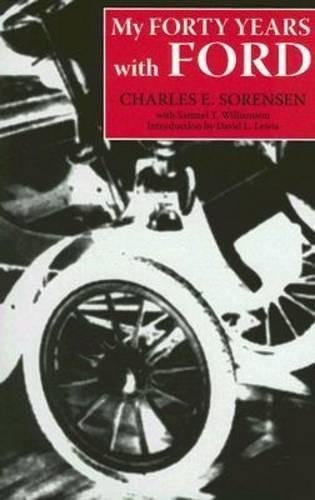
In My Forty Years with Ford, Charles Sorensen -sometimes known as “Henry Ford’s man,” sometimes as “Cast-iron Charlie”-tells his own story, and it is as challenging as it is historic. He emerges as a man who was not only one of the great production geniuses of the world but also a man who called the plays as he saw them. He was the only man who was able to stay with Ford for almost the full history of his empire, yet he never hesitated to go against Ford when he felt the interests of the company demanded it. When labor difficulties mounted and Edsel’s fatal illness was upon him, Sorensen sided with Edsel against Henry Ford and Harry Bennett, and he insisted that Henry Ford II be brought in to direct the company despite the aging founder’s determination that no one but he hold the presidential reins.
First published in 1956, My Forty Years with Ford has now been reissued in paperback for the first time. The Ford story has often been discussed in print but has rarely been articulated by someone who was there. Here Sorensen provides an eyewitness account of the birth of the Model T, the early conflicts with the Dodge brothers, the revolutionary announcement of the five-dollar day, and Sorensen’s development of the moving assembly line-a concept that changed our world. Although Sorensen conceived, designed, and built the giant Willow Run plant in nineteen months and then proceeded to turn out eight thousand giant bombers, his life’s major work was to make possible the vision of Henry Ford and to postpone the personal misfortune with which it ended. My Forty Years with Ford is both a personal history of a business empire and a revelation that moves with excitement and the power of tragedy.

Ford’s 351 Cleveland was designed to be a ‘mid-sized’ V-8 engine, and was developed for higher performance use upon its launch in late 1969 for the 1970 models. This unique design proved itself under the hood of Ford’s Mustang, among other high performance cars. The Cleveland engine addressed the major shortcoming of the Windsor engines that preceded it, namely cylinder head air flow. The Windsor engines just couldn’t be built at the time to compete effectively with the strongest GM and Mopar small blocks offerings, and the Cleveland engine was the answer to that problem. Unfortunately, the Cleveland engine was introduced at the end of Detroit’s muscle car era, and the engine, in pure Cleveland form, was very short lived. It did continue on as a low compression passenger car and truck engine in the form of the 351M and 400M, which in their day, offered little in the way of excitement. Renewed enthusiasm in this engine has spawned an influx of top-quality new components that make building or modifying these engines affordable.
This new book reviews the history and variations of the 351 Cleveland and Ford’s related engines, the 351M and 400M. Basic dimensions and specifications of each engine, along with tips for identifying both design differences and casting number(s) are shown. In addition to this, each engine’s strong points and areas of concern are described in detail. Written with high performance in mind, both traditional power tricks and methods to increase efficiency of these specific engines are shared.
With the influx of aftermarket parts, especially excellent cylinder heads, the 351 Cleveland as well as the 351M and 400M cousins are now seen as great engines to build. This book will walk you through everything you need to know to build a great street or competition engine based in the 351 Cleveland platform.
Autobooks-Aerobooks 2900 W. Magnolia Blvd. Burbank, CA 91505 (818) 845-0707 Hours: Tuesday-Friday 10:00 AM – 6:00 PM Saturday 10:00 AM – 6:00 PM Closed Sunday and Monday Accept Credit Cards gift cardYES, We have Gift Cards - Click Here AUTOBOOKS IS OPEN...
Autobooks-Aerobooks 2900 W. Magnolia Blvd. Burbank, CA 91505 (818) 845-0707 Hours: Tuesday-Friday 10:00 AM – 6:00 PM Saturday 9:00 AM – 6:00 PM "Cars & Coffee" on Saturday morning! Closed Sunday and Monday Accept Credit Cards YES, We have Gift Cards - Click Here...
Autobooks-Aerobooks 2900 W. Magnolia Blvd. Burbank, CA 91505 (818) 845-0707 Hours: Tuesday-Friday 10:00 AM – 6:00 PM Saturday 9:00 AM – 6:00 PM "Cars & Coffee" on Saturday morning! Closed Sunday and Monday Accept Credit Cards YES, We have Gift Cards - Click Here Terms...












